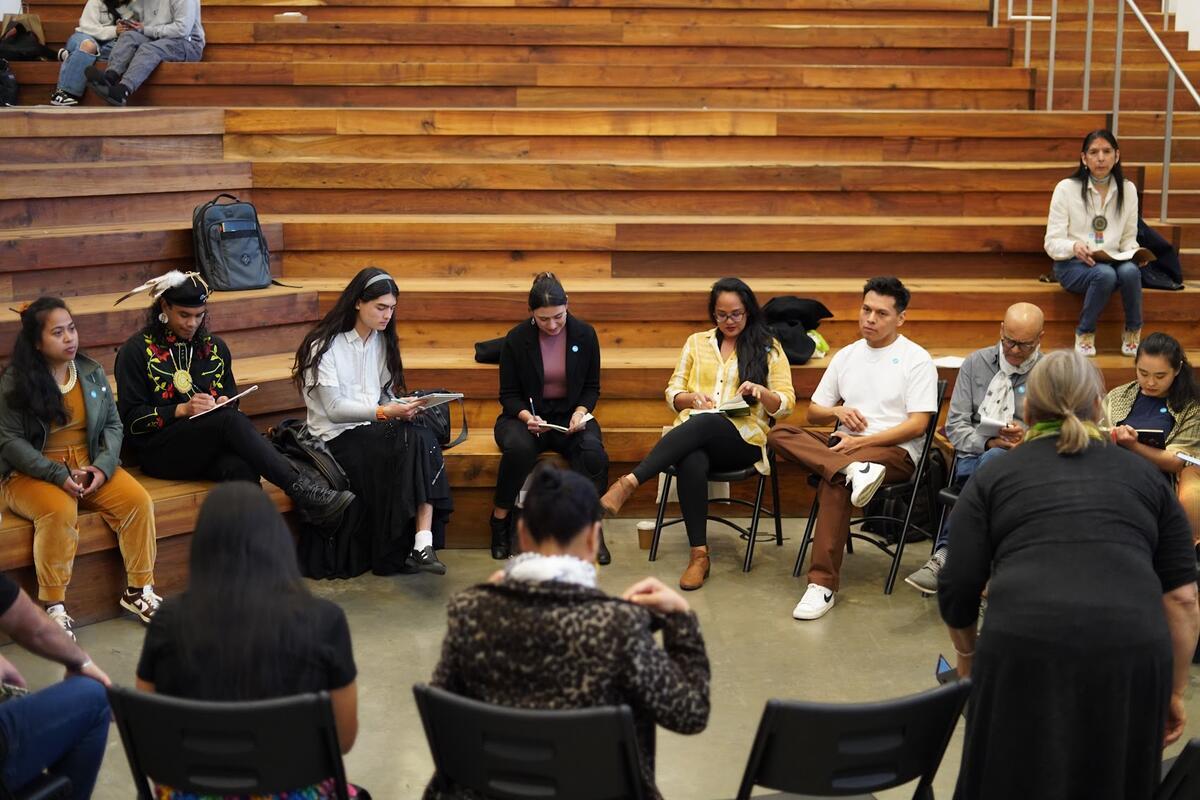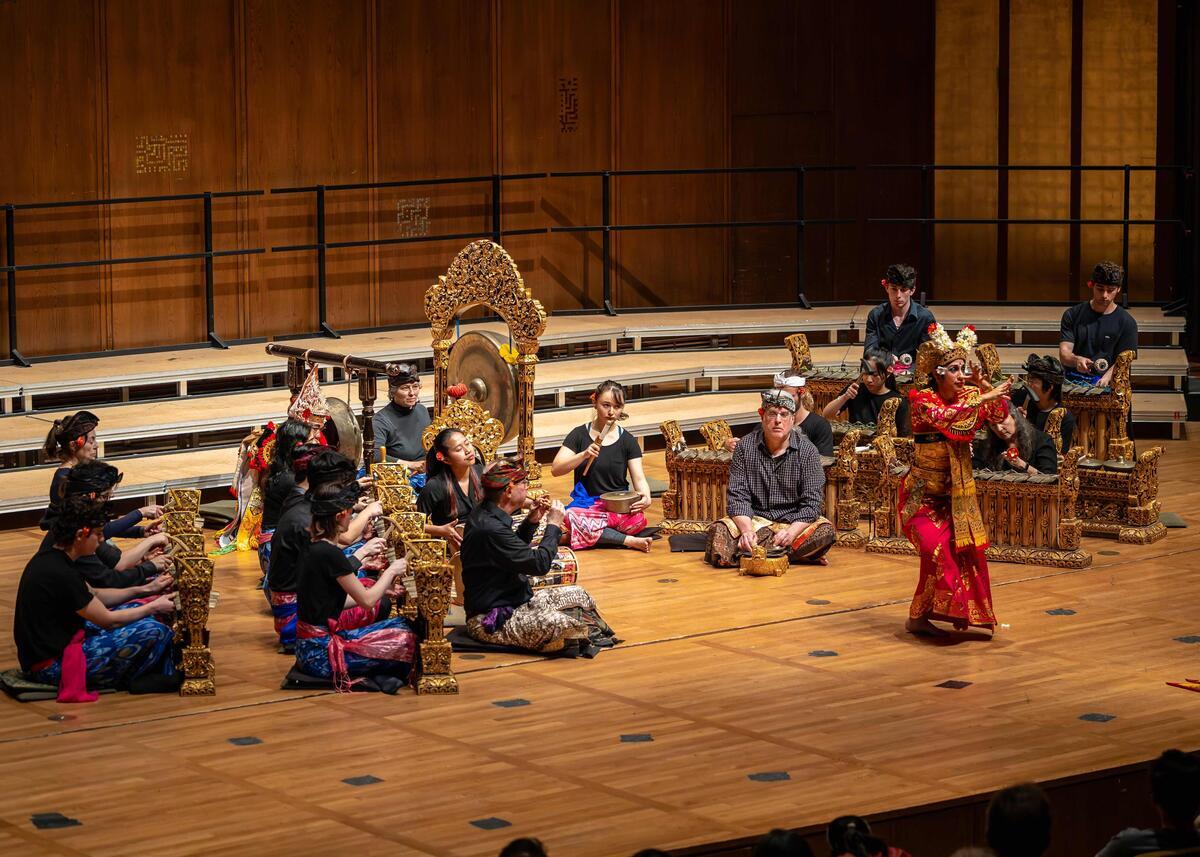
The Division of Arts & Humanities nurtures an ever-expanding arts constellation, where Visual and Performing Arts illuminate our campus and beyond. These arts spaces — both on campus and off — are integral to many interdisciplinary projects in research, education, and public engagement at UC Berkeley and in the Bay Area.


Art Practice & Anthropology Building
The Art Practice and Anthropology Building houses the Department of Art Practice, which has become one of the most popular majors on campus in the past five years. This vibrant building contains printmaking studios, sculpture studios, digital media labs, painting studios, the Worth Ryder Gallery, and the Garron Reading Room, along with various multi-use classrooms. Walking through its halls on any given day, one can encounter active reviews in the hallways and appreciate a Sol Lewitt mural, among many other artistic displays and events that this dynamic space has to offer. It's a hub of creativity and academic excellence, fostering a rich environment for aspiring artists.
Website


Center for New Music and Audio Technology
The UC Berkeley Center for New Music and Audio Technologies (CNMAT) is affiliated with the Department of Music and offers extensive programs in research, pedagogy, and public performance, focusing on the creative interaction between music and technology. CNMAT’s research encompasses sensor technologies, multi-channel audio interfaces, parallel computing in music, and spatial acoustics. It hosts a variety of concerts, lectures, and events informed by its cutting-edge research. The pedagogy program is integrated with the graduate composition program, offering workshops and resources like the Max/MSP/Jitter Depot.
Website


Garron Reading Room
The Garron Reading Room, managed by the Department of Art Practice, is a specialized, non-circulating art book collection at UC Berkeley. It houses thousands of volumes, including artist monographs, catalogs, art history texts, theory books, and zines. The collection features donations from notable Art Practice professors like Sidney Gordin and Erle Loran, as well as alumni such as Sonya Rapoport (MA’49). Its Special Collections include rare items like Adrian Piper’s “Colored People” (1991), an original Castelli/Sonnabend Videotape and Film Catalog (1974), and a binder of Gemini G.E.L. documents signed by Robert Rauschenberg (circa 1975), and faculty-approved MFA thesis papers from the 1980s.
Website


The Magnes Collection of Jewish Art and Life
The Magnes Collection of Jewish Art and Life, a museum and research center at UC Berkeley, is one of the world's leading Jewish museums. It connects people of all backgrounds with the history, vibrancy, and diversity of Jewish life through its collections-based exhibitions and programs. Founded in 1962 as the Judah L. Magnes Museum by Seymour and Rebecca Camhi Fromer, it was one of the first Jewish museums in the U.S., focusing on preserving the legacy of vanishing Jewish communities post-Holocaust. In 2010, it became part of UC Berkeley, enhancing its mission as the Magnes Collection of Jewish Art and Life. Learn more about the history of The Magnes.
Website

Arts Research Center
The Arts Research Center is a think tank for the arts. It acts as a hub and a meeting place, a space for reflection where artists, scholars, curators, and civic arts leaders from a variety of disciplines can gather and learn from one another. ARC advances, but also challenges, the “cross-disciplinary” ethos in contemporary art practice by bringing innovators in the fields of visual art, creative writing, dance, theatre, music, architecture, film, public art, photography, and social practice into dialogue and debate. Participants share different histories, test perceptions of skill and innovation, and analyze the economic circuits and support systems that constrain and enable cross-disciplinary art practice.
Website


Bancroft Dance Studio
The Bancroft Dance Studio is used and managed by the Department of Theater, Dance, and Performance Studies as a dance and practice studio. Completed in 1898, it is the second-oldest building on campus, though it didn’t actually become part of the campus until 1960. Originally designed as the First Unitarian Church of Berkeley, the studio now hosts classes in choreography, African dance, and numerous other performance disciplines. The space is renowned for the incredible light that pours in through its yellow-tinted windows facing Dana Street and its iconic roundel window. Location: 2401 Bancroft Way
Website


Durham Studio Theater
Durham Studio Theater, nestled in Dwinelle Hall at UC Berkeley, is a versatile 140-seat venue managed by the Department of Theater, Dance, and Performance Studies. This dynamic space hosts a diverse array of events, including performances, dance recitals, theater productions, and more. Serving both educational and entertainment purposes, it provides a vibrant platform for students and artists to showcase their talents and engage with the community. With its humble and intimate setting, Durham Studio Theater is a vital part of the campus, fostering creativity and artistic expression in the heart of Berkeley.
For a schedule of events, visit the TDPS website here.
Website


Hertz Hall
Hertz Hall, named for Alfred Hertz, the 1915-30 conductor of the San Francisco Symphony who bequeathed his estate to UC Berkeley for music, is managed by the Department of Music. This 678-seat concert hall hosts free noontime concerts during the academic year, offering a vibrant musical experience for the campus community. Hertz Hall also houses the department’s collection of historic organs, making it a vital center for both performance and musical heritage. Located at the heart of the campus, Hertz Hall continues to celebrate and foster musical excellence in a space rich with history and culture.
See the department of music schedule for performances here.
Website


Morrison Hall
Opened in 1958, Morrison Hall in the southeast quadrant of UC Berkeley's campus houses the core facilities of the Department of Music. Annually, over 3,000 students pass through its halls. The first floor, facing Hearst Field and Faculty Glade, includes classrooms accommodating 12 to 52 students, the Baroque Music Ensemble's instrument collection, and the Elkus Room, a 100-seat hall for lectures, recitals, and rehearsals. The Department Office and the famous "Room 107" are also on the first floor. The ground floor features practice rooms and a student lounge, while the top floor houses faculty offices, seminar rooms, and the Indonesian gamelans. Several spaces are slated for renovation.
